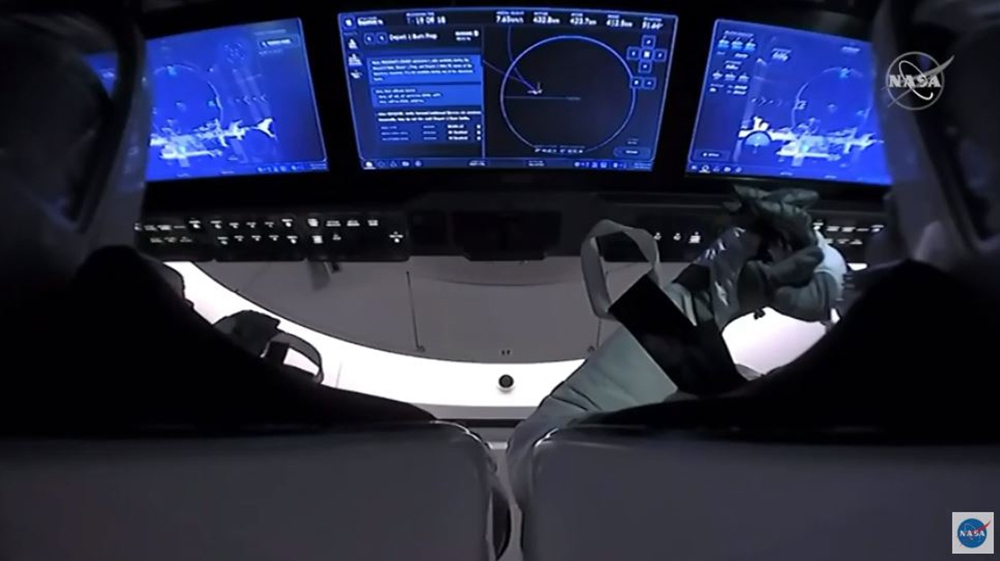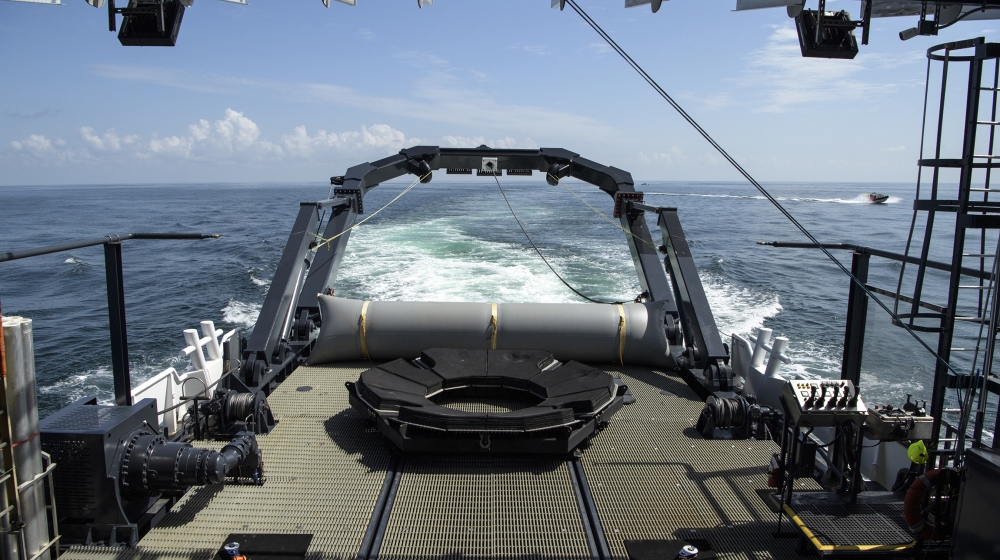SpaceX has safely delivered two astronauts back to Earth for NASA, following an historic two-month mission to the International Space Station (ISS).
With the help of four white and orange parachutes, test pilots Doug Hurley and Bob Behnken splashed down in the Gulf of Mexico at 18:48 GMT on Sunday.
As soon as the capsule hit the water, the recovery crews went to work on retrieving the parachutes and saving the capsule so they could hoist it out of the water and extract the crew.
Both Hurley and Behnken reported feeling great after returning to Earth and were fully checked out by medical staff before flying home to Houston and their families.
Water landing
Astronauts typically arrive on land, and this return was not only the first to splash down in the Gulf but also the first water landing since the end of the Apollo programme in the 1970s.
To prepare for the landing, NASA selected seven potential landing sites around the Florida Peninsula, with the preferred site being Cape Canaveral. But after a tropical storm formed in the Atlantic Ocean earlier this week, the teams had to turn their attention to Florida’s West Coast.
Pensacola was selected as the primary site on Saturday, shortly before the crew undocked from the space station. The weather conditions in Pensacola were pretty close to perfect on Sunday afternoon when the SpaceX Crew Dragon capsule re-entered the Earth’s atmosphere.
To begin their journey home, Hurley and Behnken undocked from the orbital outpost at 21:54 GMT on Saturday evening, with the capsule backing away from the station autonomously and kicking off its trip back to Earth right on schedule.
The astronauts spent roughly 18 hours in orbit, slowly distancing themselves from the ISS, and lining up with the landing zone before making a harrowing dive into Earth’s atmosphere. The Dragon had to conduct what is called a deorbit burn, or a short firing of its onboard thrusters that helps the capsule not only re-enter the Earth’s atmosphere but significantly slow itself.
The craft then made one final manoeuvre to make sure it was in the optimal position for landing before starting the trek back to Earth. And this is where things really started to heat up.
Falling through the atmosphere, Crew Dragon reached temperatures of 3,500 degrees Fahrenheit (1927 degrees Celsius). It relies on a specially designed heat shield to protect the vehicle and the crew inside. Due to the intense heat and plasma surrounding the vehicle, Hurley and Behnken experienced a brief communications blackout that lasted approximately six minutes.
Webcast of Crew Dragon’s return to Earth from the @space_station with @AstroBehnken and @Astro_Doug → https://t.co/bJFjLCzWdK https://t.co/xZmI41Zw5S
— SpaceX (@SpaceX) August 1, 2020
Shortly after splashdown, the capsule was swarmed by several private vessels that should not have been in the area.
Bridenstine went on to say that the US Coast Guard was tasked with clearing the landing zone prior to splashdown and they had done so. Unfortunately, the fact that it was a bright, sunny day out and that onlookers were excited about the landing led to a tricky situation.
After hauling the Dragon capsule onto the recovery vessels, SpaceX and NASA teams detected traces of highly toxic hypergolic fuel. Spacecraft rely on these fuels to power onboard thrusters. The crew was never in any danger, but these traces of gas are the reason why onlookers are encouraged to keep their distance.
NASA’s commercial crew program manager, Steve Stitch, said that the Crew Dragon capsule completed all of its objectives and did so with near flawless execution. “I’m speechless,” he told Al Jazeera, after the successful splashdown.
Bridenstine added that the test flight is a shining example of NASA’s Commercial Crew Program. “This [mission] proved that these public-private partnerships are successful,” he said. Which is good news for NASA who is placing its grand plans for Mars and the Moon in the hands of SpaceX and other commercial providers.
The capsule will now be transported back to SpaceX’s Dragon lair at Cape Canaveral where it will undergo intense scrutiny as crews prepare it for its next flight.
Sometime in early 2021, four astronauts – including Megan McArthur, who is Behnken’s wife – will climb on board, along with fellow NASA astronaut Shane Kimbrough, Thomas Pesquet of the European Space Agency and Japan’s Akihiko Hoshide, for their own mission to the ISS.
Sunday’s landing was a crucial part of the mission. SpaceX has brought multiple spacecraft back from space before, but none that has carried humans until now.
Crew Dragon is a bit trickier to land than its cargo-carrying counterpart. That is because the Crew Dragon is packing an emergency abort system. This is only the second time that the crewed version has landed, with the first occurring successfully in March 2019.
“Bringing a spaceship home, that’s a really big deal,” Benji Reed, director of crew mission management at SpaceX, said during an earlier news conference on the landing. “And it’s very important, as part of that sacred honour that we have, for ensuring that we bring Bob and Doug back home to their families, to their kids, and making sure that they’re safe.”
The landing also marked the final test for SpaceX as part of NASA’s Commercial Crew Program, an initiative designed to build space taxis for NASA that will transport its astronauts to and from the space station. On May 30, SpaceX became the first private company to fly astronauts for NASA.
Following the successful launch of Crew Dragon in late May, NASA announced that SpaceX would be able to reuse both its Falcon 9 first-stage boosters and the Dragon capsules on future astronauts’ missions, and not require new hardware each time.
Each Dragon capsule can be flown as many as five times, and according to Reed, it should only take about two months to get Hurley and Behnken’s capsule ready to fly again.
Credit: Source link
![A capsule with NASA astronauts Robert Behnken and Douglas Hurley splashes down in the Gulf of Mexico [NASA/Reuters] A capsule with NASA astronauts Robert Behnken and Douglas Hurley splashes down in the Gulf of Mexico, August 2, 2020, in this screen grab taken from a video. NASA/Handout via REUTERS](https://www.aljazeera.com/mritems/Images/2020/8/2/ac3fd6a1a1864e468156f9d916bcdee3_18.jpg)

![The SpaceX capsule is lifted onto a ship in the Gulf of Mexico [NASA TV/AP Photo] In this frame grab from NASA TV, the SpaceX capsule is lifted onto a ship, Sunday, Aug. 2, 2020 in the Gulf of Mexico. Astronauts Doug Hurley and Bob Behnken spent a little over two months on the Inte](https://www.aljazeera.com/mritems/Images/2020/8/2/068eacc234864a48a99a6a66e146f4c0_18.jpg)
